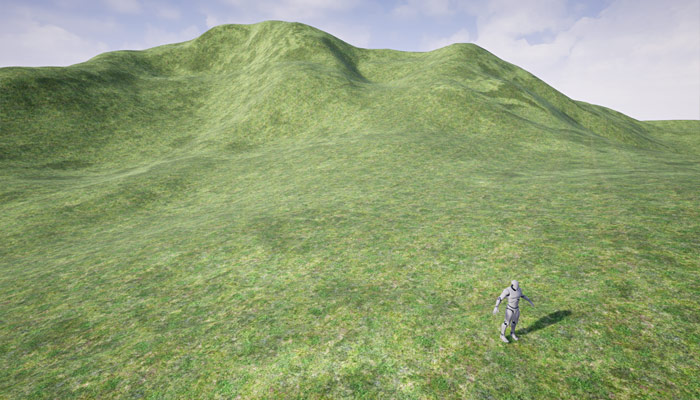How would you like to get a beautiful, smooth, textured landscape? Imagine if you can just drag and drop a sheet of computer-generated land and also have that terrain look as if it was made by a specialist? There are a number of wonderful things which may be done with the power of computer-generated terrain and land. And now you can find these wonderful effects directly on your yard. All you need is some landscape feel software and you'll be able to begin getting those effects now.
Landscape Texture
The very first thing a landscape feel can do for you is to make and place many types of vegetation where you wish to see them. This is especially nice once you are attempting to save and protect certain species of wildlife. You don’t want the bull to overrun the area, or the snakes to get to wherever they have to be. With the proper representation of distinct species of plants, along with the correct shading and light, you can have a gorgeous, precise representation of all of the different species of creatures you want to appear in your agricultural landscapes. Landscape texture may be utilized to get this done.
Landscape Texture
Another way that landscape textures can be used would be to make and place small species of creatures where they may not traditionally be seen in a specific landscape. By way of instance, you may not have lots of black bear in an urban environment, but with the appropriate representation and shading of black bear, you might get black bears in a metropolitan setting. Similarly, different types of insects may be more abundant in a desert setting than in a forested setting. The tiny species of plants and animals can live in such settings, without overcrowding and producing an undesirable habitat for them. This is the basic premise under the concept of textural discontinuity hypothesis.
Landscape Texture
Let us take a look at an example. One of the most common image representations of individuals is of a person standing in a little town. From time to time, this signifies someone with large breasts, and other times, it reflects a small thin person. If we put the picture of this individual in a scene where the landscape feel is quite coarse and unpleasant, we could tell that the girl is quite voluptuous. Likewise, if the landscape has many trees and bushes, the female will not appear so petite and thin.
Landscape Texture
There is a long-standing debate between mass and species conservation biogeography. The mass conservation concept states that the composition of a landscape can be altered to better preserve certain groups of species in regard to their numbers from the local environment. In this theory, grass and shrubs could be put in locations where they are more abundant to preserve the richer grass species. The opposite is reported to be accurate for species conservation theory. Whereas in character, there are not many species of one size or another, and where two distinct species occupy the identical area, the gaps in their various reproductive abilities and land requirements result in gaps in population size.
This long and detailed history of analyzing plant species of various shapes, sizes, and surroundings has led to some decisions about Landscape Texture. On the other side, some scientists think that the main Landscape Textures is manmade and are supposed to decorate landscapes or cities, while some believe that complicated landscapes need to be produced artificially. As one example, creating horizontal fields so as to attract wildlife and deer is reported to be useless because these animals prefer walking around in areas. On the other hand, large game species such as wolves and bears would prefer large open spaces in which to seek out.
A special type of Landscape Texture is called continuous forest landscape. It was initially introduced in the 1970s by the Swiss National Park Service (Nord de la Poudre) to replace a string of previously graded parks. The goal was to provide a sanctuary for swans, crappie, sturgeon, and migratory birds. Along with providing a habitat for birds, the continuous forest texture provides enough wildlife and shelter for small animals, including voles, lizards, and gerbils. The constant forest texture is generally made from conifers and junipers, although it can also be produced from cypress, pine, or oak trees. The best advantage of the constant forest landscape is it is extremely versatile and can suit a range of climates, and can be made on small or massive scales.
Another example of a Landscape Texture is the nanangroe landscape. This Landscape Texture is created using flat grassy regions surrounded by shallow ponds and lakes. The mountainous regions are usually surrounded by a fenced-in area of different peaks and characteristics, ranging from sandy to clay soils. Other possible developments to this nanangroe landscape comprise slate fences, and pavas.
